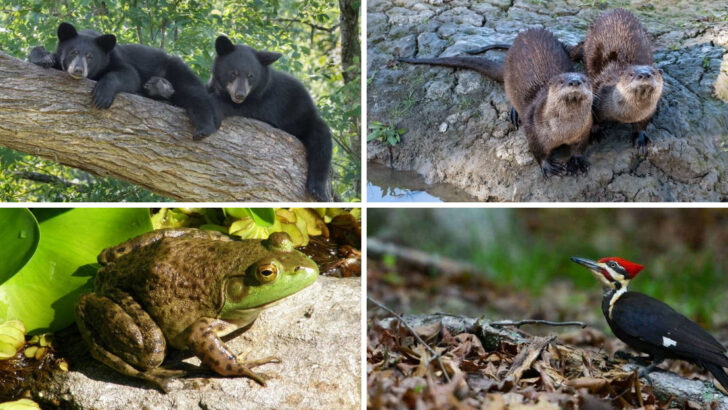The Great Smoky Mountains aren’t just beautiful—they’re alive.
Every rustle in the trees, every shadow on the trail, could be something wild watching from the brush.
This isn’t your average hike-through-the-woods situation. We’re talking black bears with serious attitude, elk that bugle like it’s a battle cry, and sneaky bobcats that vanish before you even know they were there.
And that’s just the start.
From venomous snakes sunbathing on rocks to owls that glide like ghosts through the night, these mountains are buzzing, creeping, slithering, and howling with untamed energy.
Whether you’re a wildlife nerd or just love knowing what’s lurking behind the next tree, these 24 animals are the real rulers of the Smokies—and they’re not shy about it.
American Black Bear
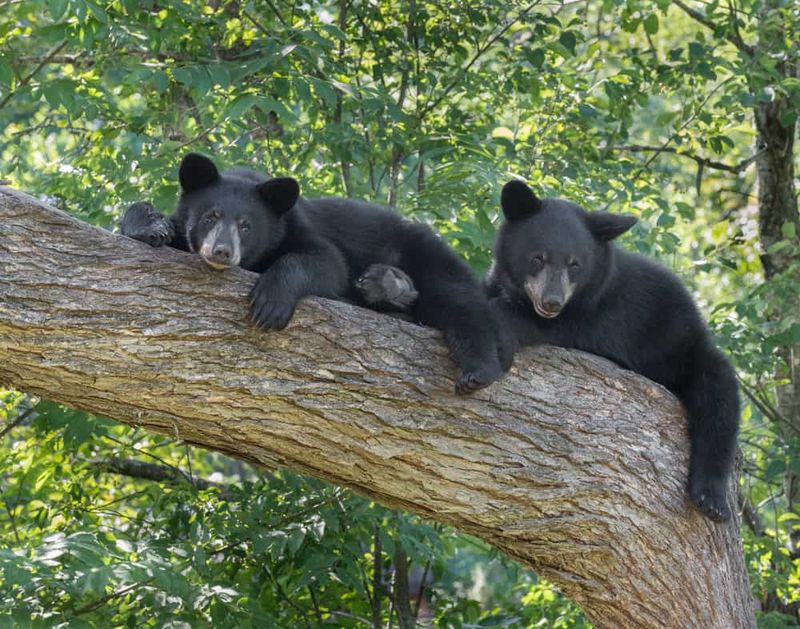
With its glossy black coat and playful nature, the American Black Bear is a symbol of wilderness in the Smokies. These bears are often spotted foraging for berries in the underbrush.
Their keen sense of smell helps them locate food from miles away. Despite their size, black bears are excellent climbers and swimmers, showcasing their adaptability.
When visiting the Great Smoky Mountains, it’s essential to store food securely, as these curious mammals can be attracted to human snacks. Witnessing a black bear in its natural habitat is a thrilling experience!
White-tailed Deer
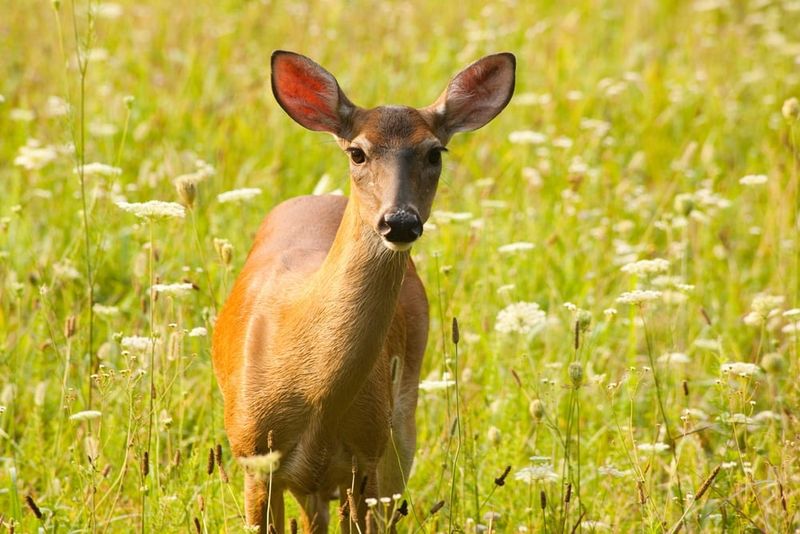
The white-tailed deer, with its elegant strides and gentle demeanor, is a serene presence in the Smokies. Often seen grazing in meadows, these deer are a common sight during dawn and dusk.
Their distinctive white tail acts as a warning signal to others when raised. Fawns, spotted and delicate, are nurtured by attentive mothers.
Observing a herd gracefully moving through the forest, their ears twitching at every sound, feels like a scene from a nature documentary. These deer contribute to the area’s natural beauty and biodiversity.
Eastern Wild Turkey
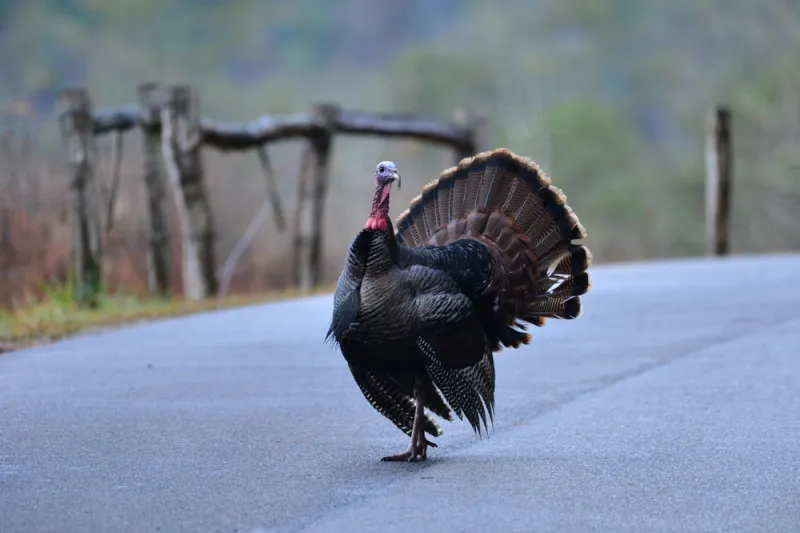
Eastern Wild Turkeys, with their striking plumage, are a fascinating sight in the Smokies. Known for their social nature, they travel in flocks, foraging for seeds and insects.
Males, called toms, puff up their feathers and fan their tails in a display of grandeur during mating season. Their gobble echoes through the forest.
These turkeys are not just a Thanksgiving symbol; they play a crucial role in the ecosystem by spreading seeds. Watching their antics can be both entertaining and enlightening for observers.
Red Fox
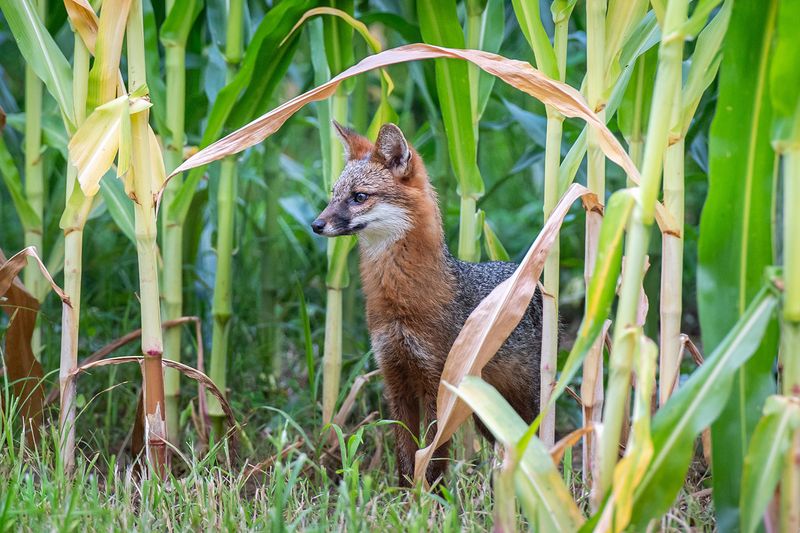
The red fox, with its fiery coat and sharp senses, is a cunning predator in the Smokies. Solitary by nature, these foxes are often spotted during dawn and dusk as they hunt for small mammals.
Their bushy tails provide balance and warmth. They are masters of camouflage, blending seamlessly with the autumn leaves.
Observing a red fox in action is like watching a skilled performer. Their playful kits add a touch of charm to the wilderness. Foxes play a vital role in controlling rodent populations in the area.
Bobcat
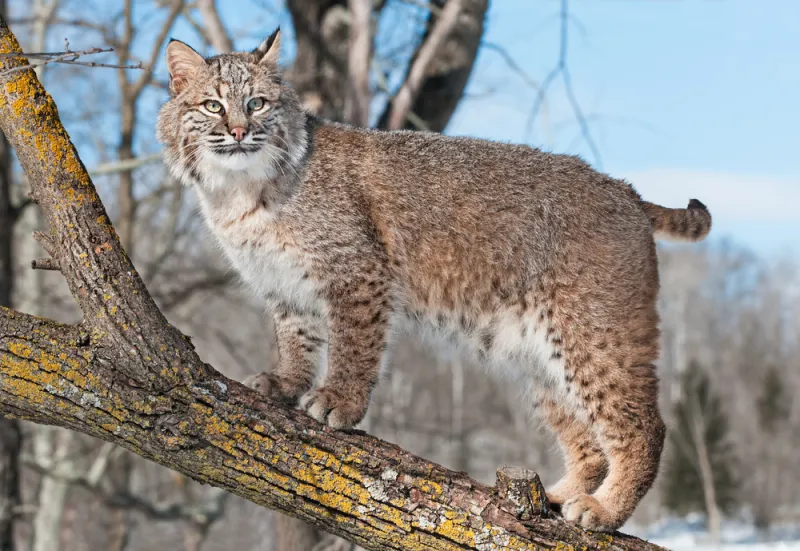
Bobcats, with their tufted ears and stealthy demeanor, are elusive residents of the Smokies. These solitary hunters are most active during twilight, stalking rabbits and rodents.
Their spotted coats provide excellent camouflage among the dense foliage. Bobcats prefer remote areas, making sightings a rare treat.
Their agility and keen senses make them formidable predators. As they silently navigate the underbrush, they maintain the ecological balance by controlling prey populations. Spotting a bobcat is a special moment for wildlife enthusiasts.
Eastern Box Turtle
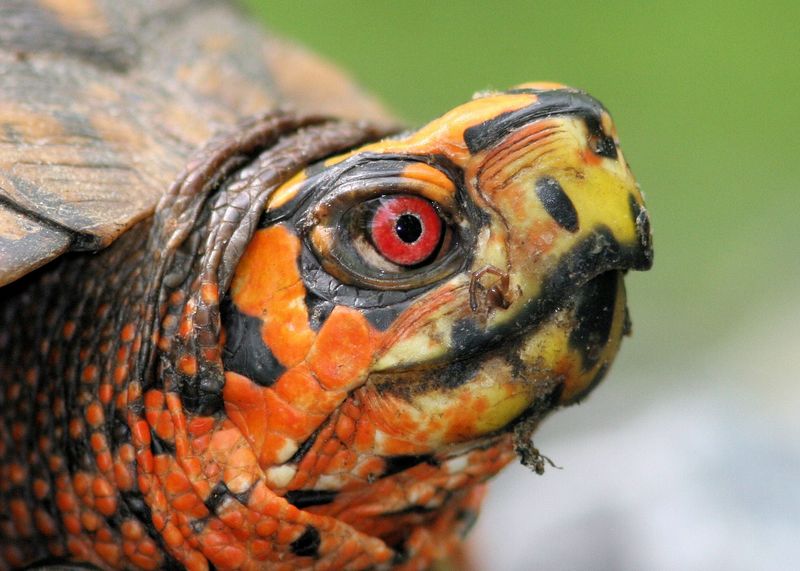
The Eastern Box Turtle, with its vivid shell patterns, is a slow but determined traveler in the Smokies. Often spotted in moist forests, these turtles are known for their long lifespan.
Their domed shells provide protection from predators, and they can completely withdraw into them during danger.
These turtles are omnivorous, feeding on insects, berries, and fungi. Observing their steady journey across a forest floor is a reminder of nature’s patience and resilience. Protecting their habitats ensures future generations can enjoy their presence.
Northern River Otter
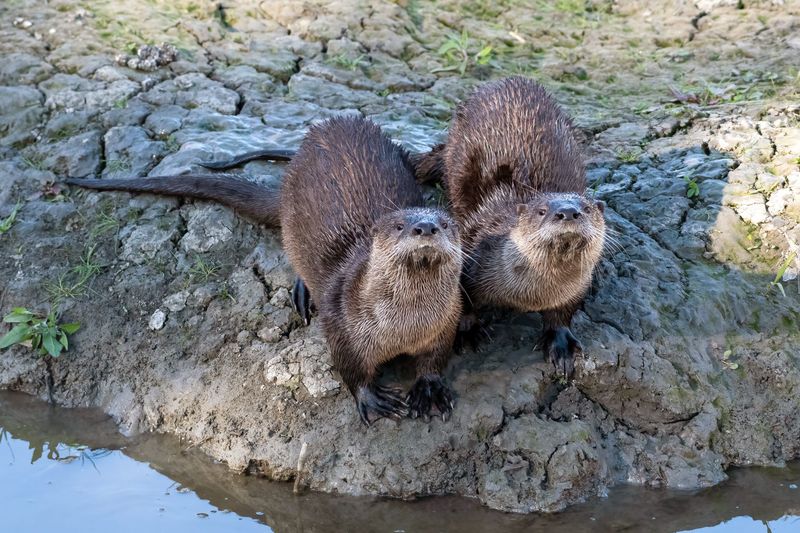
Northern River Otters, with their agile bodies and playful antics, bring joy to the waterways of the Smokies. These social creatures often form family groups, engaging in synchronized swimming.
Their dense, waterproof fur keeps them warm in cold waters. Otters feed on fish and aquatic invertebrates, using their dexterous paws to catch prey.
Watching otters play and slide along riverbanks is a delightful experience. They are vital indicators of water quality, thriving in clean, unpolluted habitats. Their presence reflects the health of the ecosystem.
Great Horned Owl

The Great Horned Owl, with its commanding presence and haunting hoot, rules the night skies of the Smokies. Known for their tufts, or “horns,” these owls are expert hunters.
Their silent flight and powerful talons make them formidable predators, often preying on small mammals and birds.
Spotting a Great Horned Owl perched high in a tree, silhouetted against a moonlit sky, is a captivating sight. They embody the mystery and allure of the nocturnal world, adding to the mountain’s rich tapestry of life.
Raccoon
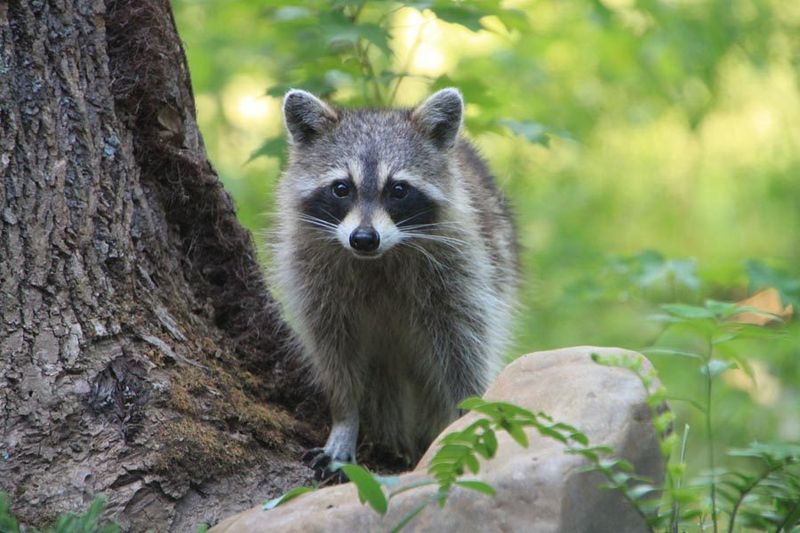
Raccoons, with their distinctive masks and nimble paws, are nocturnal foragers in the Smokies. These intelligent creatures search for food near water and are known for their problem-solving abilities.
Their diet is diverse, including fruits, insects, and even small vertebrates. Raccoons are recognized for their adaptability, often seen near human settlements.
Observing a raccoon washing its food in a stream is a glimpse into its intriguing behavior. Despite being common, they play a crucial role in seed dispersion and maintaining ecological balance.
Eastern Gray Squirrel
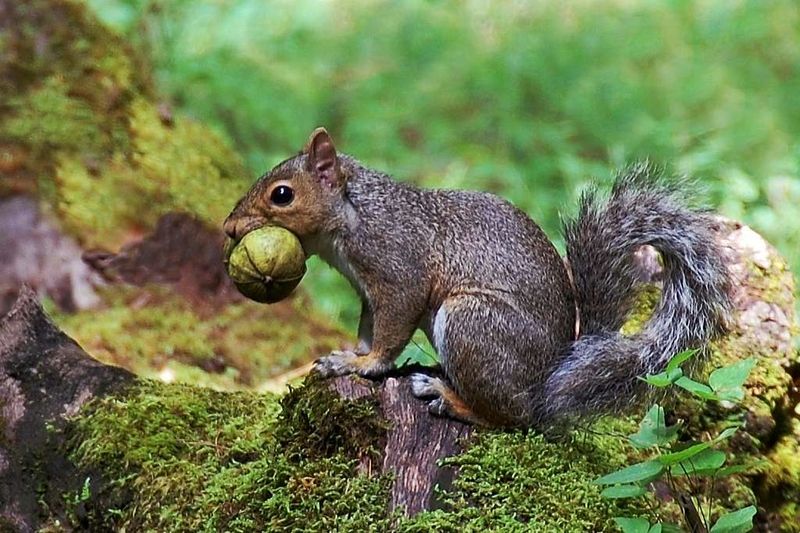
Eastern Gray Squirrels, with their acrobatic leaps and bushy tails, bring energy to the forests of the Smokies. These squirrels are expert foragers, storing nuts for the winter.
Their keen memory helps them locate hidden food caches. They are social creatures, often seen chasing each other in playful displays.
Watching a gray squirrel nibble on an acorn, twitching its whiskers, adds a touch of whimsy to a forest walk. These squirrels play a vital role in forest regeneration by dispersing seeds far and wide.
Southern Flying Squirrel
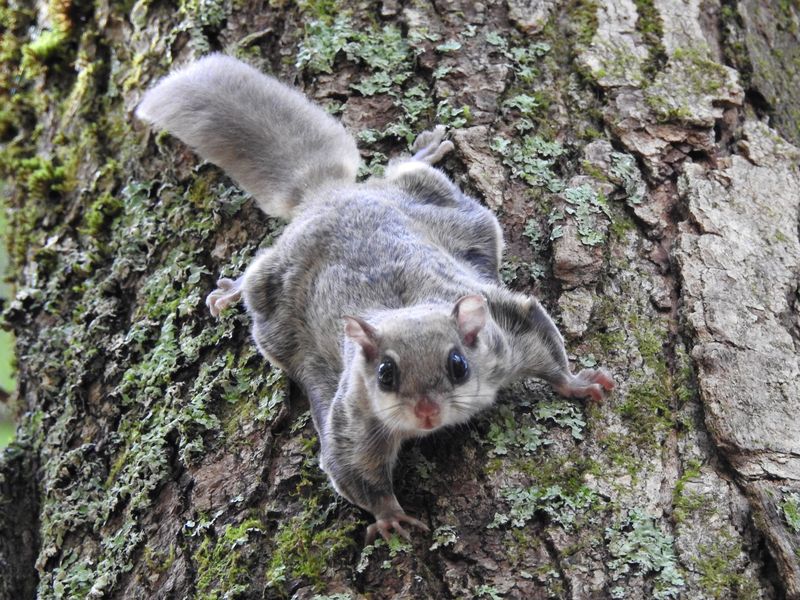
Southern Flying Squirrels, with their large eyes and gliding prowess, are secretive night dwellers in the Smokies. Using a membrane between their limbs, they glide effortlessly between trees.
These nocturnal creatures are rarely seen but often heard as they chatter among the branches. They feast on nuts, fruits, and occasionally insects.
Spotting a flying squirrel soaring through the night sky is a magical experience. They contribute to the ecosystem by controlling insect populations and aiding in seed dispersal, maintaining forest health.
Coyote
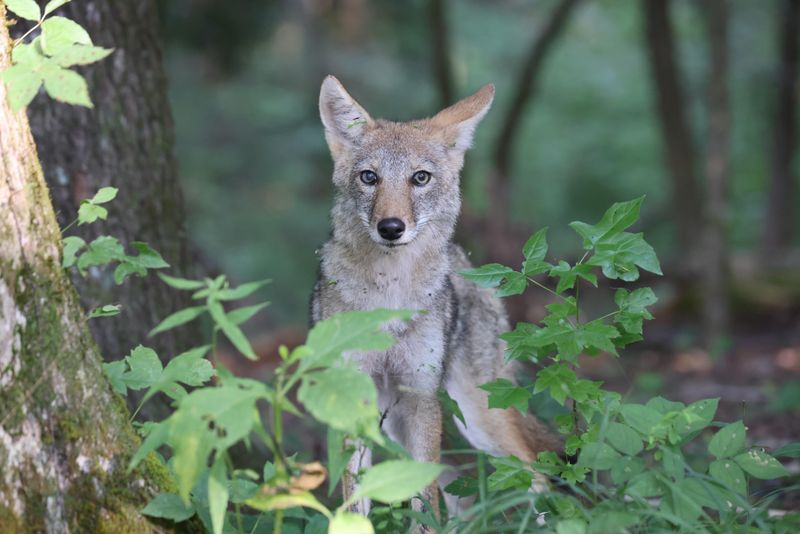
Coyotes, with their keen senses and adaptability, are versatile predators in the Smokies. Known for their distinctive howl, they communicate across great distances.
These opportunistic hunters prey on small mammals but are also scavengers, helping to keep the environment clean. Coyotes are adaptable to various habitats, including urban areas.
Observing a coyote against the backdrop of the mountains is a reminder of nature’s resilience. They play a crucial role in controlling rodent populations and maintaining ecological balance.
Eastern Newt

The Eastern Newt, with its bright orange “eft” stage, is a striking amphibian in the Smokies. These newts undergo a fascinating life cycle, transitioning from aquatic larvae to terrestrial efts, and finally returning to water as adults.
Their skin secretes toxins, deterring predators. Eastern Newts thrive in moist environments, contributing to the complex web of life.
Spotting their bright coloration against green foliage is a visual treat. They play an important role in controlling insect populations, acting as natural pest regulators in the ecosystem.
Pileated Woodpecker
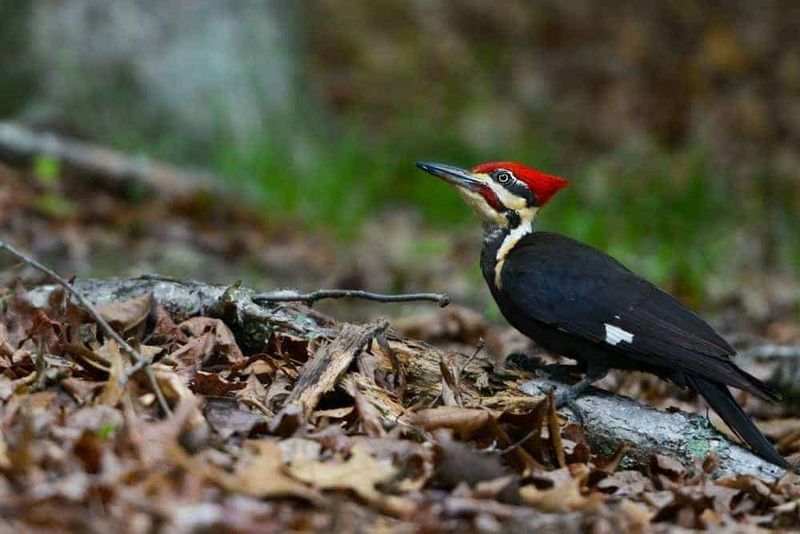
The Pileated Woodpecker, with its flamboyant red crest and bold presence, is a charismatic resident of the Smokies. Known for their powerful drumming, they carve out large cavities in trees.
These woodpeckers feed on insects, particularly carpenter ants, using their long tongues to extract prey. Their activities create nesting sites for other species.
Spotting a Pileated Woodpecker is a thrilling experience. Their loud calls and distinctive flight patterns add a dynamic rhythm to the forest, reflecting the vibrant life of the mountains.
Elk

Elk, with their towering stature and majestic antlers, are iconic figures in the Smokies. Reintroduced to the area, they have adapted well to the mountainous terrain.
These social animals graze in herds, feeding on grasses and leaves. The bugle of a bull elk during mating season is a hauntingly beautiful sound.
Witnessing an elk at dawn, mist rising in the background, is an unforgettable experience. They play a vital role in maintaining open meadows, promoting biodiversity by preventing overgrowth.
Black Rat Snake
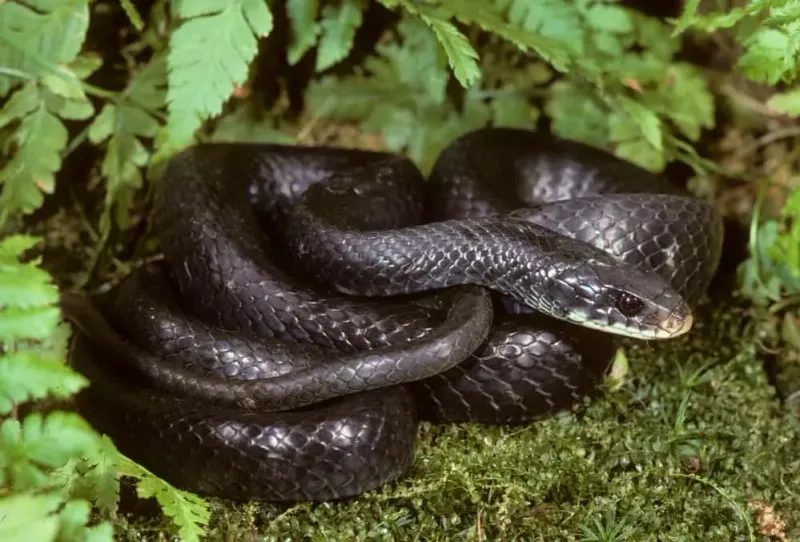
The Black Rat Snake, with its glossy scales and imposing length, is a masterful constrictor in the Smokies. These non-venomous snakes help control rodent populations.
They are often found in forests and edge habitats, basking in the sun or climbing trees. Despite their size, they pose no threat to humans.
Spotting a black rat snake is an intriguing encounter. Their presence indicates a healthy ecosystem, as they act as natural pest controllers. Respectful observation can offer insights into their ecological role.
Eastern Screech Owl
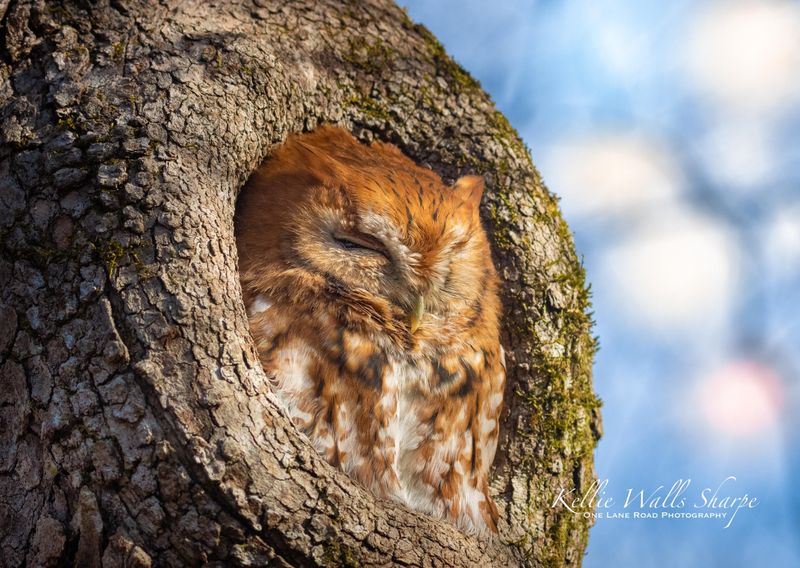
The Eastern Screech Owl, with its compact size and eerie trill, is an enchanting nocturnal resident of the Smokies. These owls come in shades of gray or reddish-brown, blending perfectly with tree bark.
Despite their small stature, they are skilled hunters, preying on insects and small mammals. Their trills and whinnies add an otherworldly melody to the night.
Spotting an Eastern Screech Owl camouflaged in a tree is a magical moment. They play a crucial role in controlling insect populations, maintaining the ecological balance.
White-footed Mouse

The White-footed Mouse, with its delicate features and agile movements, is a small but vital part of the Smokies’ ecosystem. These mice are nocturnal, often seen darting through leaf litter.
Their diet consists of seeds, fruits, and insects, which they gather and store for winter. Despite their size, they play a significant role in seed dispersal.
Observing a white-footed mouse in its natural habitat offers a glimpse into the micro-world of the forest. They contribute to the biodiversity and sustenance of the ecosystem.
Copperhead Snake
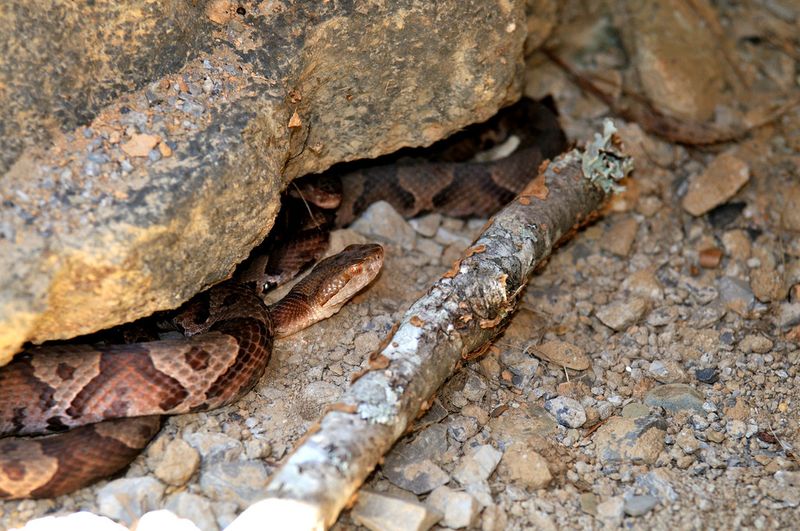
The Copperhead Snake, with its distinctive hourglass pattern, is a master of camouflage in the Smokies. These venomous snakes are often found in rocky or wooded areas.
They are ambush predators, lying in wait for small mammals or birds. Copperheads are generally non-aggressive and prefer to avoid confrontation.
Spotting a copperhead snake is a lesson in awareness and respect for wildlife. Their presence indicates a balanced ecosystem. With proper caution, observing these snakes can be a fascinating experience for nature enthusiasts.
Bald Eagle
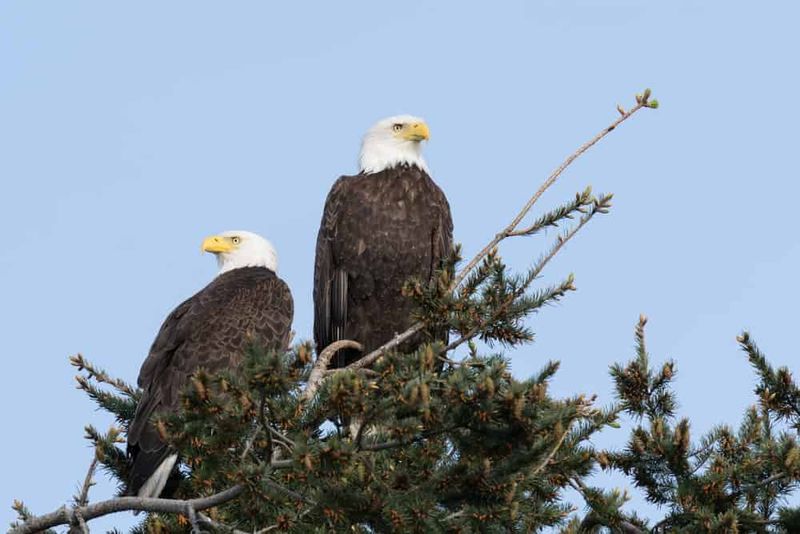
The Bald Eagle, with its regal appearance and piercing gaze, is a symbol of strength in the Smokies. These raptors are often seen soaring above open areas, hunting for fish and small mammals.
Their impressive wingspan and powerful beak make them formidable hunters. Bald eagles are known to mate for life, building large nests near water.
Spotting a bald eagle in flight, silhouetted against a mountain sky, is a breathtaking sight. Their presence signifies a healthy environment, reflecting successful conservation efforts in the region.
American Bullfrog
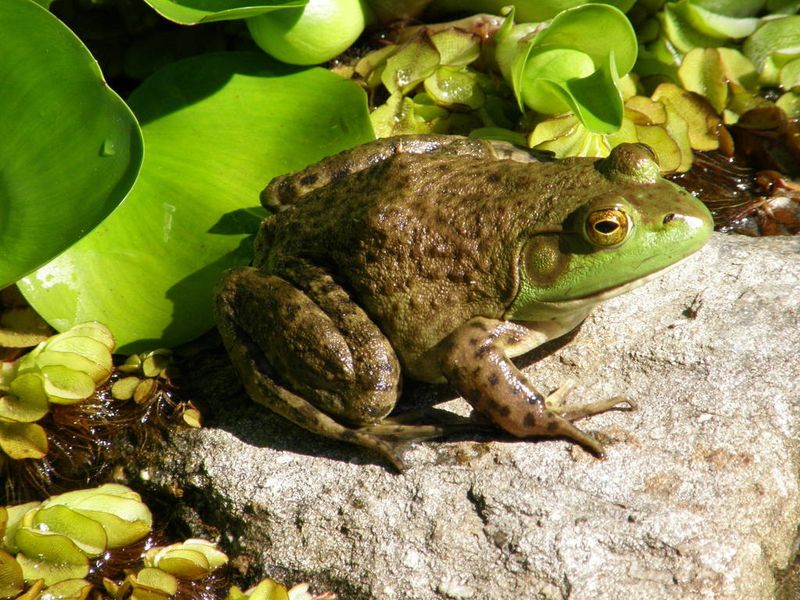
The American Bullfrog, with its distinctive croak and robust body, is a prominent amphibian in the Smokies. These frogs thrive in ponds and wetlands, where they feed on insects, small fish, and even other frogs.
Their powerful legs enable impressive jumps, and their presence is often betrayed by their loud calls. Bullfrogs are vital in controlling insect populations.
Spotting an American Bullfrog on a lily pad is a classic image of wetland life. They contribute to the dynamic ecosystems by maintaining balance among aquatic species.
Timber Rattlesnake
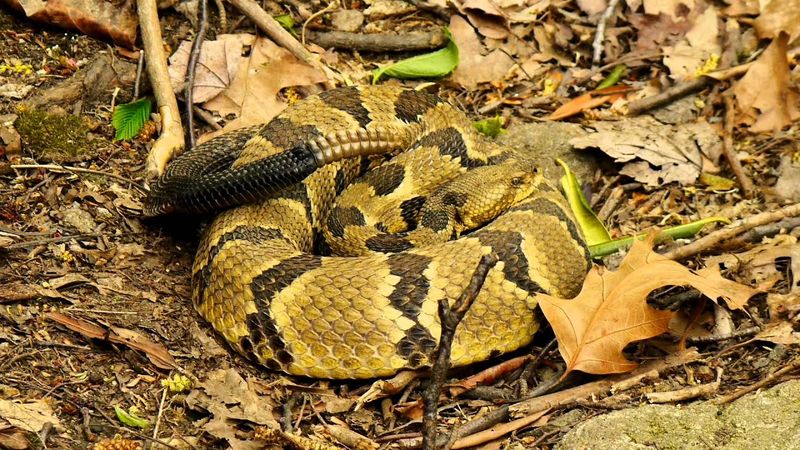
The Timber Rattlesnake, with its striking pattern and distinctive rattle, is a formidable presence in the Smokies. These snakes are shy and prefer to avoid humans.
They are ambush predators, relying on their camouflage to capture small mammals. The rattle serves as a warning, part of their defensive behavior.
Spotting a timber rattlesnake in its natural habitat is an encounter with raw wilderness. Their presence is a testament to the rich biodiversity of the mountains. With respect and caution, these snakes can be appreciated for their ecological role.
Eastern Hellbender Salamander
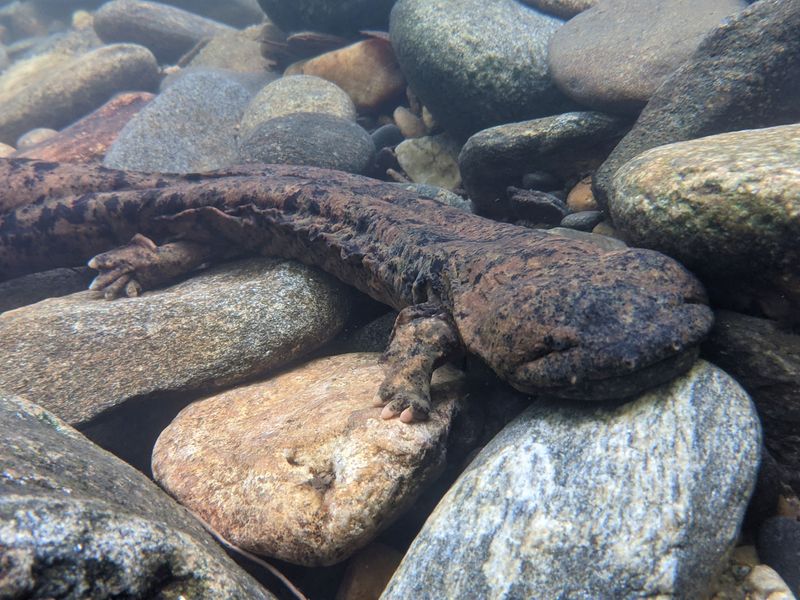
Meet the Eastern Hellbender Salamander, an elusive creature lurking beneath the cool, rocky streams of the Smokies. With its flat head and wrinkled body, this aquatic giant grows up to a surprising 29 inches. Its skin, a mosaic of browns and grays, serves as perfect camouflage against the stream bed.
Hellbenders thrive in clean, oxygen-rich waters, using their skin to breathe. They are primarily nocturnal, hiding under rocks during the day. Though harmless, their alien-like appearance can startle even the bravest hikers.
Unchanged for millions of years, hellbenders are living relics of ancient times. Search carefully, and you might just spot one!
Appalachian Cottontail
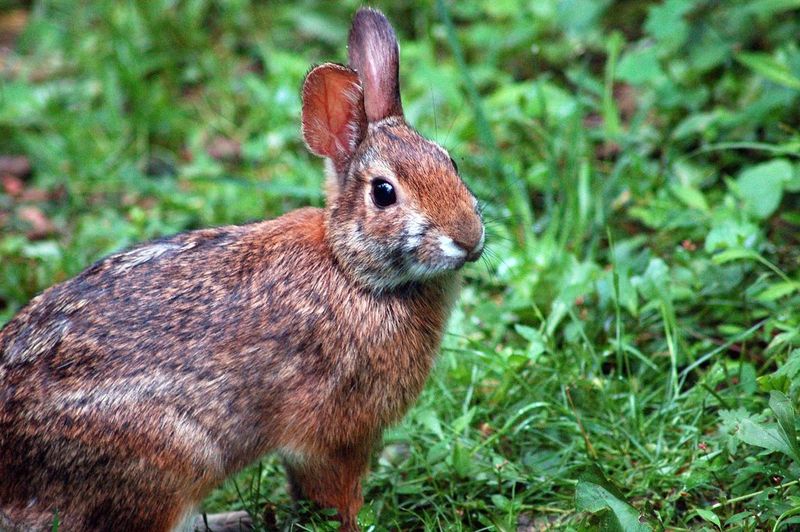
Introducing the Appalachian Cottontail, a shy and secretive dweller of the dense underbrush. This delightful rabbit, with its soft brown fur and distinctive cotton-like tail, blends seamlessly into its forest home.
Unlike its more sociable cousins, the Appalachian Cottontail prefers solitude, venturing out during twilight hours to munch on grasses and shrubs. Its keen senses keep it alert, ready to dart away at the first hint of danger.
These rabbits are vital to the ecosystem, providing food for predators while aiding in plant seed dispersal. Spotting one is a rare and delightful experience for any nature lover.

